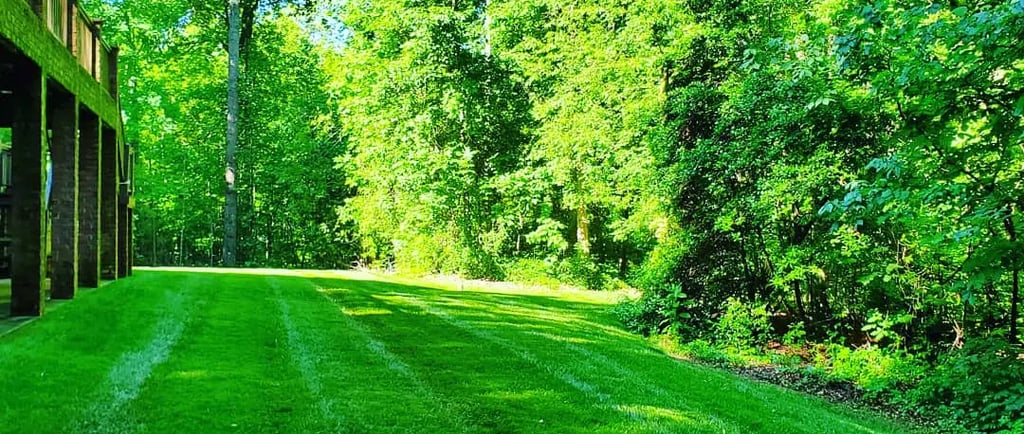How to Aerate and Seed a Lawn in North Carolina: A Comprehensive Guide
Aeration and seeding can not only provide a lush green lawn, but also helps provide much needed nutrients for grass to survive harsh weather conditions. This guide will teach you how to aerate and seed and have your lawn looking great in no time.
2/12/20252 min read


Introduction to Lawn Aeration and Seeding
The process of aerating and seeding a lawn is crucial for maintaining a healthy and vibrant yard, particularly in North Carolina's unique climate. Many homeowners may wonder if this practice is truly necessary, especially when the lawn appears to be thriving. However, the benefits of aerating and seeding far outweigh the drawbacks of neglecting these essential lawn care techniques.
Benefits of Aerating Your Lawn
Aeration involves perforating the soil with holes to allow air, water, and nutrients to penetrate deeper into the root zone. This process improves soil compaction and promotes healthier grass growth. In North Carolina, where humid summers and heavy rainfall can lead to compacted soil, aerating your lawn can significantly enhance its overall health. The achievement of deeper root development leads to stronger grass that can better withstand droughts or heat stress.
By aerating your lawn, you can also encourage the growth of micro-organisms within the soil. These beneficial organisms play a vital role in breaking down thatch, improving soil quality, and enhancing the turf’s resistance to diseases, which is particularly important in the warm climate of North Carolina.
The Importance of Seeding
Once aeration has been completed, seeding the lawn becomes the next critical step. By overseeding after aeration, you introduce new grass seeds that can fill bare spots and enhance the overall density and resilience of the lawn. The fresh seeds reap the benefits of the aerated soil, ensuring better germination rates and healthier growth.
The climate in North Carolina is conducive to the establishment of cool-season grasses such as fescue or ryegrass. By aerating and seeding during the optimal time, which is generally in early fall or spring, you are giving these grasses the best chance to thrive. Conversely, neglecting to aerate and seed may result in thinning grass, allowing for the emergence of weeds that can compete with the desired turf.
Consequences of Not Aerating and Seeding
Failing to aerate and seed your lawn can lead to numerous problems over time. Compacted soil will restrict the movement of water and nutrients, depriving your grass of what it needs to flourish. This can result in patchy areas, increased vulnerability to pests and diseases, and an unsightly appearance.
Moreover, without proper aeration and seeding, your lawn may show signs of stress during dry spells, making it harder to recover and maintain a lush appearance. The costs associated with remedying these issues later on can far exceed the time and effort invested in proper aeration and seeding.
Conclusion
In conclusion, understanding how to aerate and seed a lawn in North Carolina is essential for any homeowner interested in maintaining a healthy, resilient yard. The benefits of these practices extend beyond aesthetic appeal; they contribute significantly to the long-term vitality of your lawn. Engage in aerating and seeding now to pave the way for a thriving lawn that can withstand the challenges of North Carolina's unique environmental conditions.




Storm Valley Landscape
Check out our latest projects on our Social Media Channels
contact us today!
stormvalleylandscape@gmail.com
© 2024. All rights reserved.
(828)-816-0792
